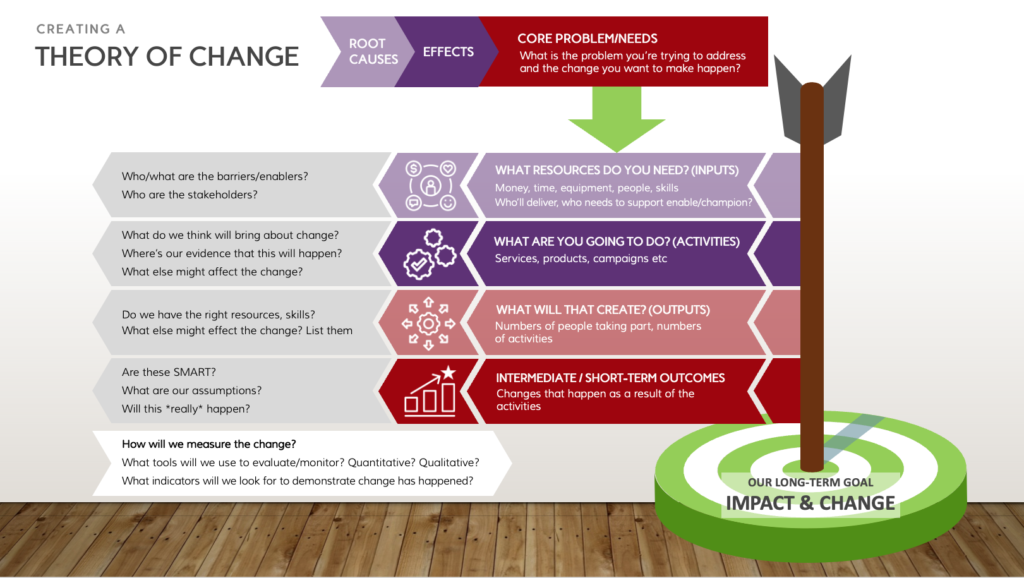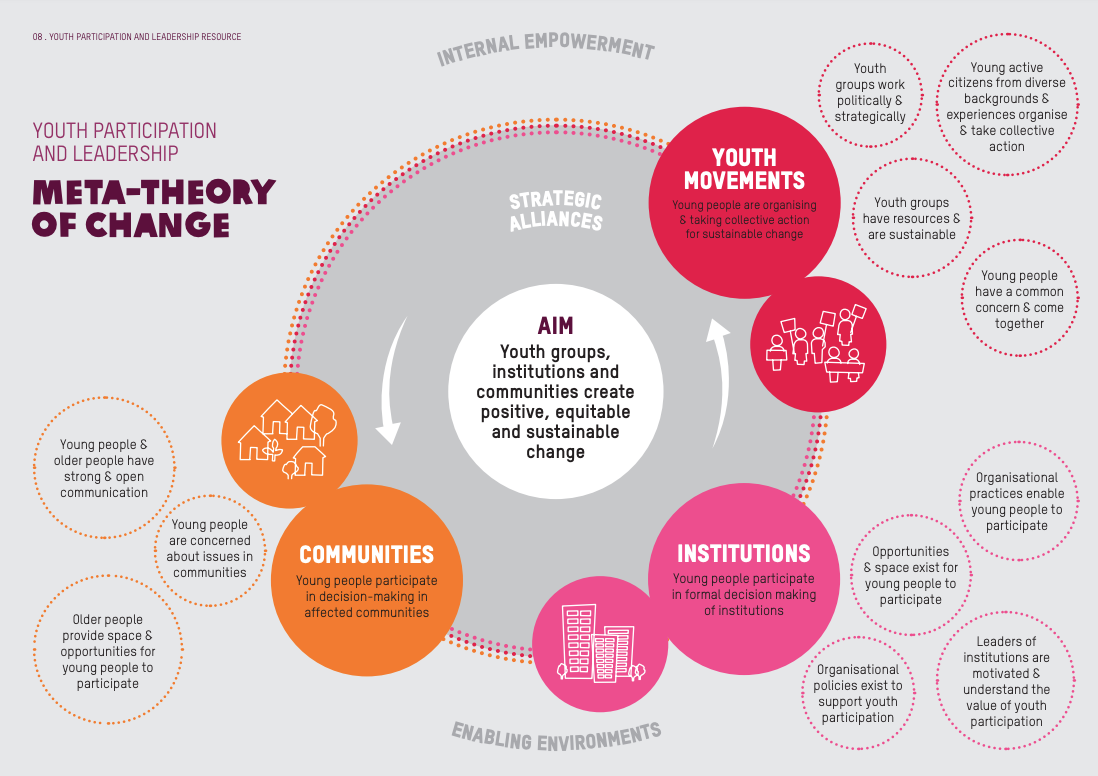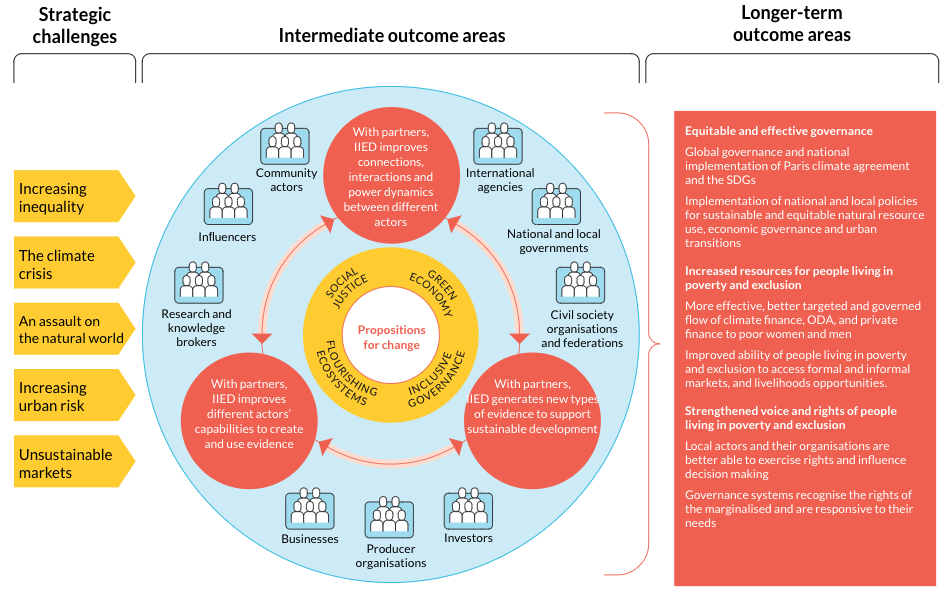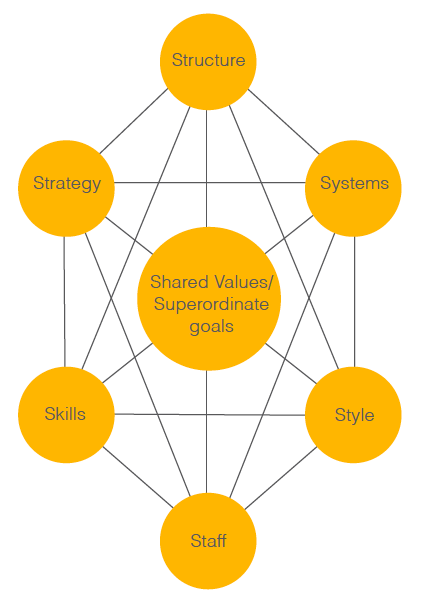
Using a theory of change for communications in music/arts organisations and charities
Theories of change and change management theories are being talked about more and more among the clients we work with at Writing Services. They’ve been used for decades in the charities sector (for example, by our clients IRC). More recently, we’ve been talking about them with music and arts organisations like Anthem and Changing Tracks. We’re also beginning to integrate them into our comms strategy work. Read on to find out more.
What is a theory of change and how can it help your organisation?
If your organisation sets out to make a difference in the world, to people or a situation, then a theory of change helps you understand how you actually make that happen.
It can help with your strategy, planning, delivery and evaluation. The process of creating it can help you and your team reflect on your vision, mission and values (see here for a tool to help you develop these), and test any assumptions. Does it make sense? Will the impact you’re hoping to have actually happen with the skills and resources you have?
It’s also a useful tool for explaining and advocating your work to partners, funders or commissioners of services. And when applied to communications – or when communications is integrated into your theory of change – it will help you to understand how your communications activities can change attitudes, understanding and behaviour. It’s even more powerful when combined with decision science principles like Mind Space.
Following are some examples of theories of change – you can find more on the NCVO know how website – Example theory of change page:
Oxfam Australia Youth Participation meta theory of change:
Video theory of change from the Centre on the Developing Child at Harvard University [5 mins]
The Music Works – most recent
The Music Works – previous:
International Institute for Environment and Development:
How do you create a theory of change?
This diagram summarises what’s involved in creating a theory of change. Click on the diagram to view it in detail (or contact us if you’d like a copy). We’d always recommend working with a specialist if you can afford it, particularly as they can make sure everyone has a voice, challenge any assumptions and move you towards greater clarity and focus. But if you’d prefer to create one in-house, there’s a step-by-step guide NCVO Know How website – How to build a theory of change, and we’ve listed further tools and resources at the end of this article.
If you work for a small organisation, it can be difficult to prioritise time and resources, particularly around communications. It’s only natural to want to jump right in and talk about channels you should be on, or videos, blogs and enewsletters you should create. Referring to the theory of change will help you to be more strategic. Using your theory of change model – and/or this diagram – to inform your comms strategy, priorities and the decisions you make will help everyone in the organisation to understand the value of communications, and to see how integral it is to the impact you want to have.
 Diagram: copyright Writing Services – you’re welcome to use it but please let us know if you’d like to 🙂
Diagram: copyright Writing Services – you’re welcome to use it but please let us know if you’d like to 🙂
What’s the difference between a theory of change and a change management theory model?
A theory of change isn’t the only model you could use. We’ve started to ‘change management’ theories to inform some of our work. So far, we’ve found theories of change most useful for organisations that are delivering services; and change management theories more useful for those more concerned with advocacy and strategy, but either may be useful to you.
A theory of change tends to be specific to a particular organisation or programme, whereas a change management theory is usually written by a particular academic or organisation but can be applied to a wide range of situations including commercial businesses.
An article in the International Journal of STEM education – Change theory and theory of change: what’s the difference anyway? – summarises the differences in this useful table:
| Terminology | Definition | Scope | Source |
| Change theory | Framework of ideas, supported by evidence, that explains some aspect of change beyond a single initiative | Generalisable beyond a single initiative | Peer-reviewed literature and books relevant to change in STEM higher education |
| Theory of change | A particular approach for making underlying assumptions in a change project explicit, and using the desired outcomes of the project as a mechanism to guide project planning, implementation, and evaluation | Single change initiative | Created and refined by project team |
For the above diagram, see: https://stemeducationjournal.springeropen.com/articles/10.1186/s40594-020-0202-3/tables/1
This blog outlines a more detailed discussion of theories of change and logical frameworks.
What change management models could you use?
Following are a few of the models we’ve seen used, or used ourselves with the organisations we work with:
Adkar : a model for change in business, government and community:
Kotter : an eight-step process for leading change:

McKinsey 7-S
We first came across this through Anita’s work on the Youth Music-funded Musical Inclusion programme evaluation, led by Kathryn Deane, Phil Mullen and Rob Hunter (read more in The Power of Equality). Rob Hunter introduced this framework, and we blogged about it on the Youth Music Network in this blog: How integrated is musical inclusivity in the work of your hub?
If you have a theory of change or change management model that you use and would be willing for us to share on this blog, we’d love to hear from you. And if you’d like to discuss how we can help your organisation communicate for change, do get in touch.
Further help and resources
[VIDEO] Theory of change, part of DIY Toolkit, funded by NESTA https://www.youtube.com/watch?v=6zRre_gB6A4
Theory of change template from DIY Toolkit, funded by NESTA
NPC Theory of Change in Ten Steps
NCVO How to build a theory of change and examples of theories of change
[VIDEO] Theory of change explained (a ‘how-to’) – David Hearle, international development specialist
What does a theory of change look like – on the Oxfam blog (for a deep-dive and more complex look)
Are you looking for help with your organisation’s communications?
We work with small charities and music/arts organisations involved in education, wellbeing, the environment or social change. We help them to communicate the value and impact of what they do, explain their work, and sell their services.
We could help you with: communications strategy and planning; developing content, copywriting and editing; refreshing or developing your website and digital communications; stories, articles and case studies; developing and editing online courses and other learning content. If that sounds of interest, get in touch for a no-obligation chat.






